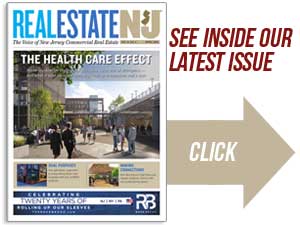By Joshua Burd
Brokerage firm Gebroe-Hammer Associates is off to a fast start in 2022, inking the sale of nearly 1,200 apartments in New Jersey and Philadelphia across 17 transactions in January.

The activity, which follows a strong 2021, equates to $214 million in deal volume during the first month of the year. That includes $107.8 million worth of activity in Bergen, Passaic, Middlesex and Monmouth counties in connection with nine transactions comprising 422 units, along with eight sales spanning 764 units in and around Philadelphia for a combined $106.1 million.
“Investors have not let up in their aggressive pursuit of any and all multifamily properties that come online near a train station, along bus routes, are a short distance to highway access or — better yet — all three,” said Ken Uranowitz, Gebroe-Hammer’s president. “This checklist applies to most, if not all, of the submarkets extending from northern New Jersey to the edge-city suburbs of the Philadelphia MSA. For this reason, for-sale value-add Class B and C workforce housing product to newer construction Class A assets remain in extremely short supply.”
According to the Livingston-based firm, the northern and central New Jersey deals were primarily value-add investment opportunities, with the potential for upside through renovations and bringing rents up to at-market levels. Buyers are employing that strategy at both newer properties experiencing second-generation tenancy and complexes dating back to the end of World War II.
“Today, these assets remain the backbone of northern and central New Jersey’s apartment-housing stock and present today’s investors with an opportunity to breathe new life into properties that have good bones,” Uranowitz said. “This strategy lays the groundwork to reposition properties in order to appeal to a modern, diverse tenant base comprised of career starters, office workers, blue-collar workers and public servants, executives with families and empty-nesters seeking to shed the responsibilities of homeownership.”
Uranowitz added that newer Class A properties coming to market typically offered rent concessions during the original lease-up period and are now in a position to command upper-tier market-rate rents. Thanks to inflation and a new wave of residents who are priced out of the single-family home market, upward pressure on rents and occupancies are creating even greater demand for such buildings.










